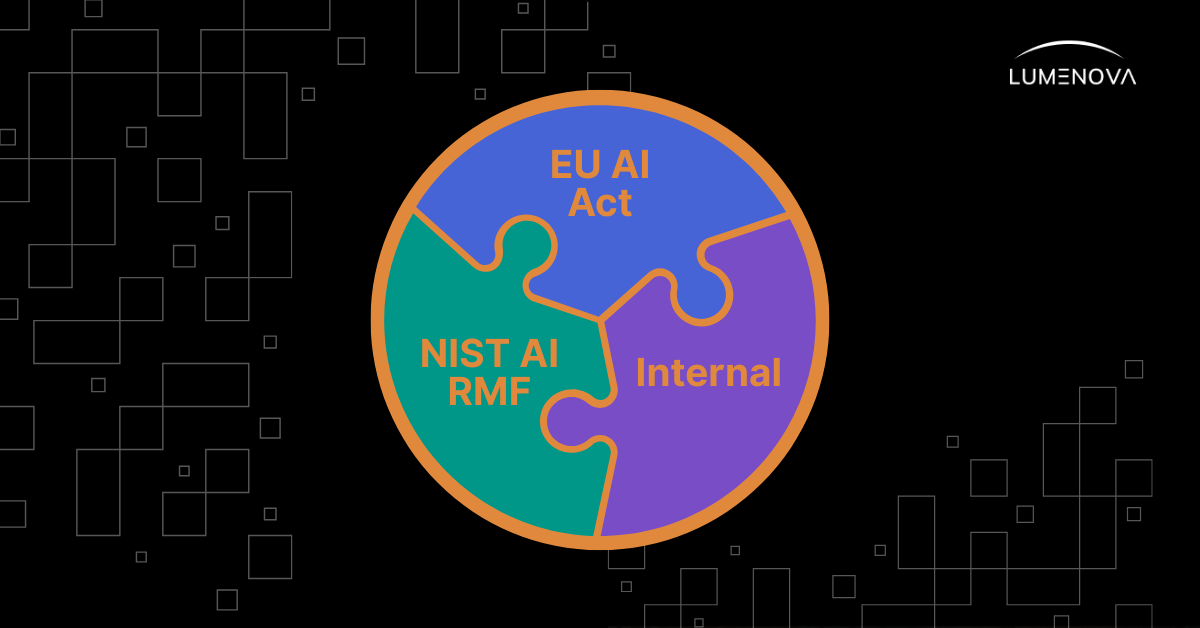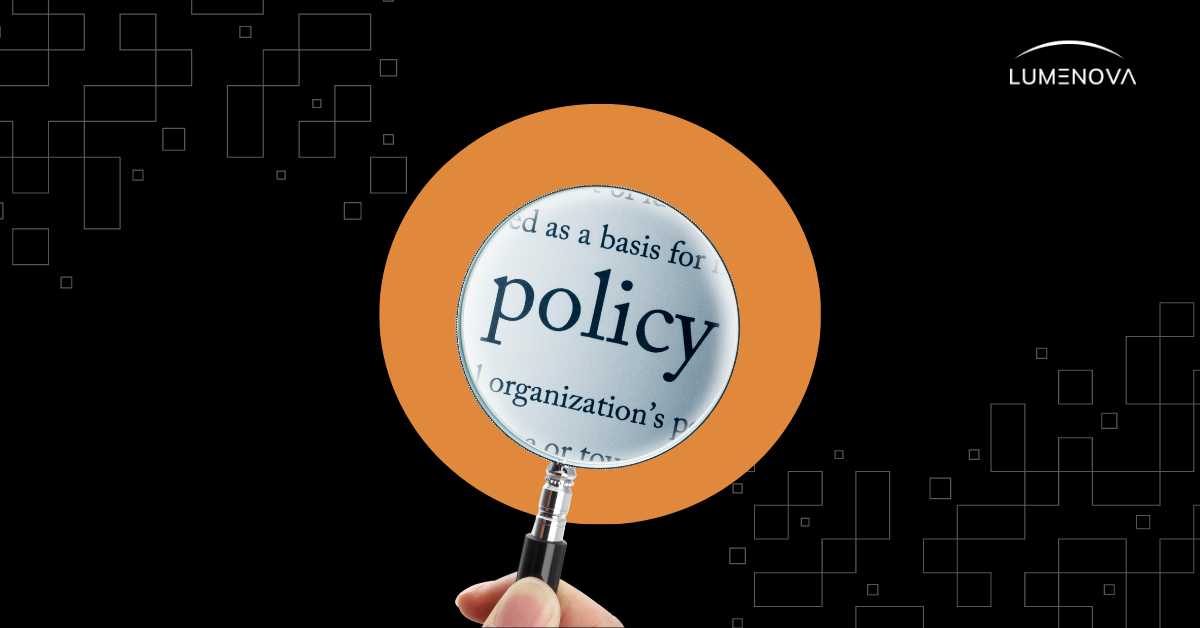Achieving Compliance with NIST AI Risk Management Framework
Utilize Lumenova AI’s expertise to establish and execute a flexible yet effective AI risk management strategy in line with the NIST AI Risk Management Framework.
- Develop a Robust and Resilient AI Risk Management Framework: Identify and manage AI risks throughout their lifecycle to better understand what they are, how they’re measured and prioritized, and whether they overlap with other tech risks.
- Implement processes that support the four key functions of the NIST AI RMF: Align your AI systems with trustworthy AI governance principles for successful AI risk management.
- Set Up Automated AI Compliance Checks: Implement automated systems to routinely evaluate AI practices against current regulations, delivering ongoing assurance and foresight.
- Leverage NIST Compliance Reporting: Generate comprehensive reports highlighting compliance status, areas for improvement, and recommended actions to maintain regulatory alignment.
What is the
NIST AI Risk Management Framework
The National Institute of Standards and Technology’s AI Risk Management Framework (NIST AI RMF) is a continually evolving document directed at organizations of all sizes and profiles. The framework undergoes regular revisions and updates driven by noteworthy developments in the AI ecosystem, so it’s critical that organizations that leverage it for AI risk management purposes maintain an up-to-date understanding of its structure, function, and principles.
Lumenova AI can help organizations establish and execute an AI risk management strategy that’s flexible and adaptable enough to account for changes in AI risk management standards, procedures, and guidelines, but concrete enough to be effective.

A Comprehensive Overview of the NIST AI RMF’s Approach to Risk Management
The NIST AI RMF does not discriminate between organizations with mature vs. immature AI risk management protocols, emphasizes risk management throughout the AI lifecycle, and addresses the importance of understanding technical, societal, and organizational AI risks holistically. The framework is also voluntary, although recent regulatory developments hint that it may become mandatory.

Identifying Key Stakeholders in AI Risk Management According to the NIST AI RMF
The NIST AI RMF identifies several actors integral to AI risk management practices, which include those involved in data collection and processing procedures, system design, development, and training, specialized or targeted system evaluation, and the analysis of interactions between disparate AI systems.
Each of these roles plays a critical part in establishing a robust AI framework and adhering to NIST standards. Effective AI management within this framework ensures that all AI systems are governed according to the principles outlined in the NIST framework, promoting consistency and reliability across the organization.

Navigating AI Risk Management Challenges: Insights from the NIST AI RMF
According to the NIST AI RMF, there are four main challenges to developing a successful AI risk management strategy:
- Imprecise or inaccurate definitions of AI risks may increase the difficulty with which they are measured and/or evaluated.
- Determining the right risk tolerance is a context-specific endeavor, dependent upon organizational objectives, business requirements, policies, and available resources.
- AI will inspire a wide variety of risks and vulnerabilities and organizations may not always have the time and resources to address them appropriately—AI risks must be prioritized.
- AI risks are not only widespread but also interconnected with other kinds of risks, such as those tied to software or cybersecurity—overlapping risks must be accounted for.

Exploring the Core Functions of AI Governance Through the NIST AI RMF
The heart of the NIST AI RMF lies in the AI governance functions it proposes. Each of these functions is foundational to the structure required for a robust and resilient AI risk management strategy. These functions are:
- Governance - Align broader organizational strategies, objectives, and policies with internal AI risk management efforts and develop context-specific risk management protocols.
- Mapping - Consider AI’s risks, benefits, limits, and capabilities to integrate it effectively and avoid negative impacts on stakeholders.
- Measuring - Develop and establish metrics, tools and standards by which to continuously monitor, measure, and minimize AI risks emerging throughout the AI lifecycle. .
- Managing - Many AI risks will emerge unexpectedly, and it is therefore critical to manage and address pre-identified or known risks proactively.

Embracing Core Principles for Trustworthy AI as Outlined by the NIST AI RMF
Trustworthy AI isn’t just a buzzword—it’s rooted in well-known ethical principles and standards. In fact, the NIST AI RMF identifies seven core principles required for trustworthy AI:
- Validity and Reliability - AI system performance must be accurate, truthful, and consistent.
- Safety - AI systems must not present a significant risk of harm.
- Security and Resilience - AI systems must be safeguarded and perform reliably in novel circumstances or throughout changing environments.
- Accountability and Transparency - The design, function, and use of AI systems should be easily understandable. If AI plays a role in generating harmful impacts, a clear means by which to hold human actors responsible should be present.
- Explainability and Interpretability - The process by which an AI system arrives at an output as well as the reasons for which that output was produced should be easily understandable.
- Enhanced Privacy - Robust data security and privacy protocols are necessary for an AI system to be considered trustworthy.
- Fairness - Though AI systems will never be purely objective, biases and potentially discriminative outputs should be minimized.

Insights on AI Compliance and Regulation

May 22, 2025
AI Governance Frameworks Explained: Comparing NIST RMF, EU AI Act, and Internal Approaches
Compare NIST AI RMF, EU AI Act, & internal governance. Learn how these frameworks guide organizations in building trustworthy, responsible AI.

February 8, 2024
Progress of AI Policy in 2023 and Predictions for 2024
2023 was an exciting and ambitious year for AI policymaking. Find out more about the progress of AI policy in 2023 and our predictions for 2024.

January 29, 2024
NIST's AI Risk Management Framework
Explore the core elements of effective AI risk management. Understand how to reduce AI-related risks & ensure safe implementation across your organization.